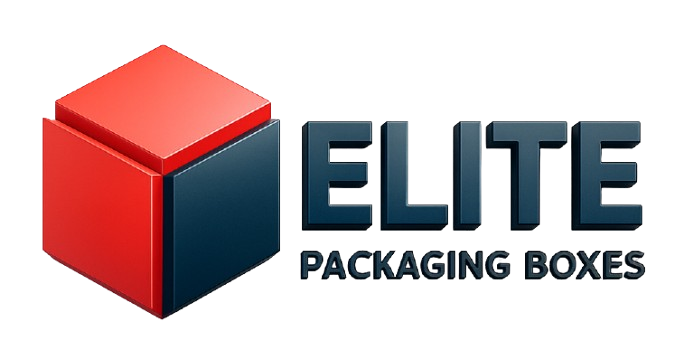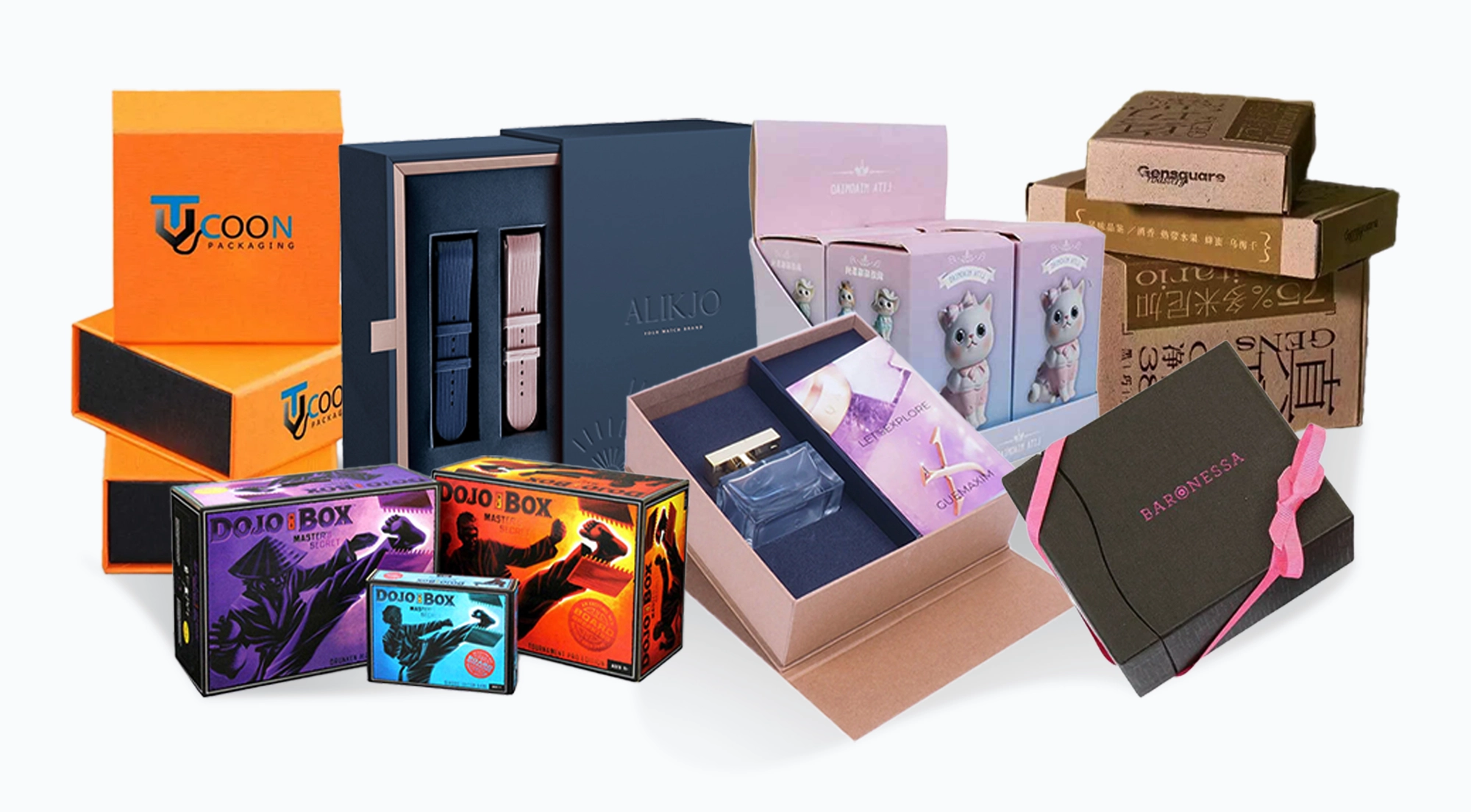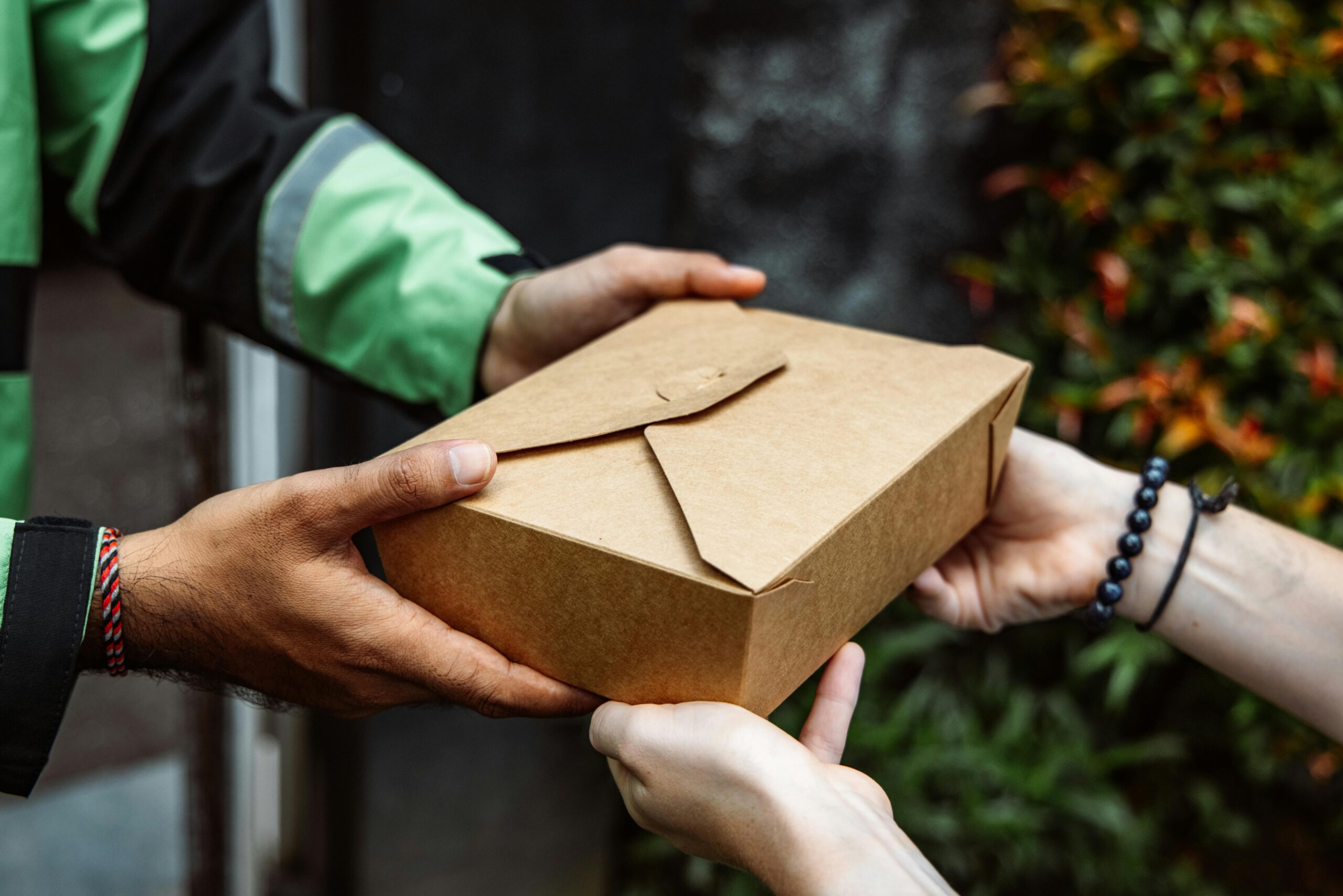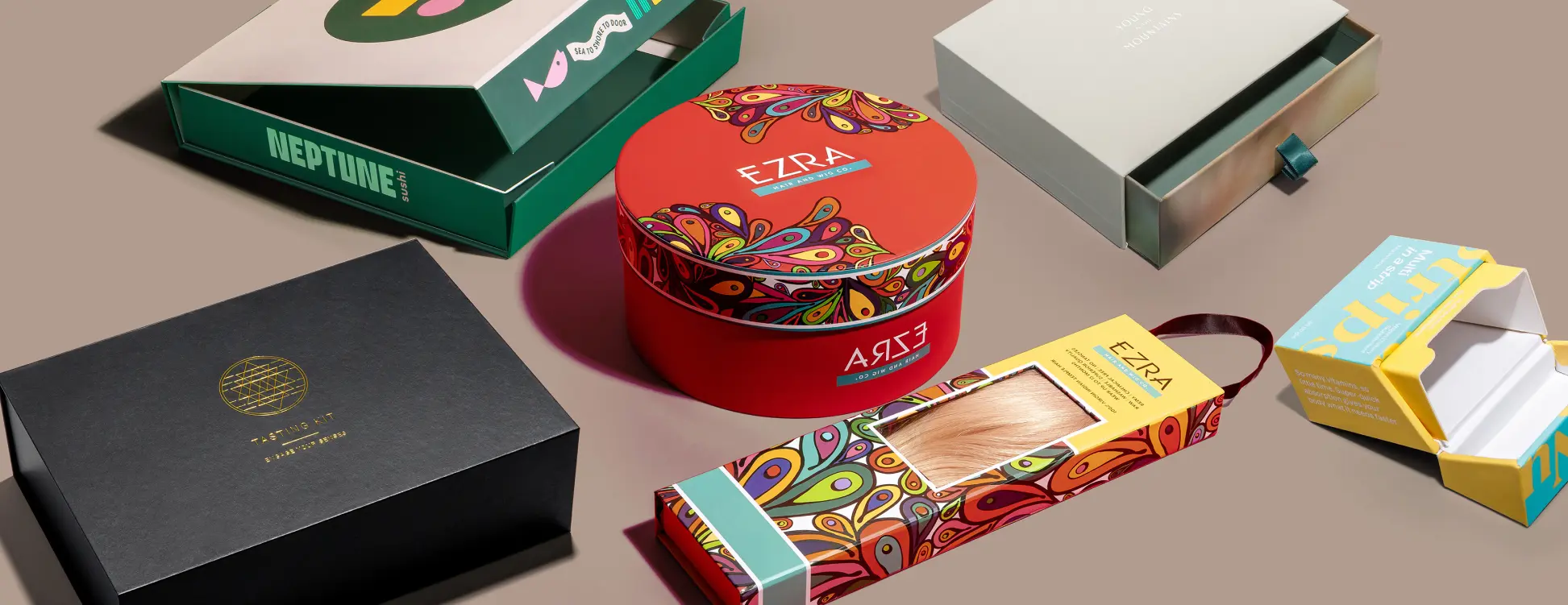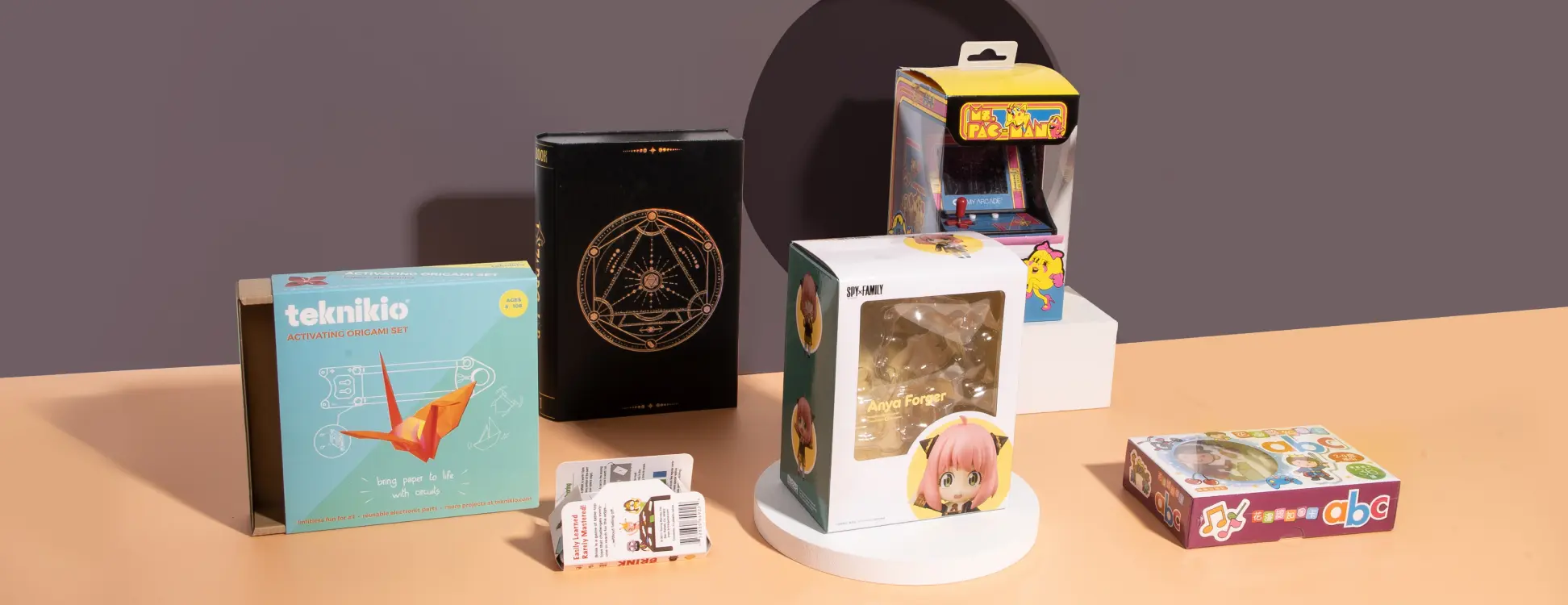How Custom Packaging Can Boost Your Brand Identity and Sales Introduction In today’s competitive market, packaging is no longer just about protecting your product—it’s a powerful marketing tool. With the rise of eCommerce and unboxing culture, custom packaging has become a critical way to build a strong brand identity and increase sales. Whether you’re a small business or an established brand, the right custom box design can leave a lasting impression, foster customer loyalty, and drive repeat purchases. 1. First Impressions Matter Why it works: Packaging is the first physical touchpoint between your brand and your customer. Impact: A well-designed box instantly communicates your brand’s personality Helps create a memorable unboxing experience that sets you apart from competitors Tip: Use your logo, brand colors, and fonts consistently to make your box instantly recognizable. 2. Increases Perceived Value Why it works: Premium-looking packaging makes your product feel more valuable—even before it’s opened. Impact: Customers are willing to pay more for products that look high-end Good packaging justifies premium pricing Tip: Invest in quality materials, finishes like matte or gloss, and structured box styles. 3. Boosts Brand Recall and Recognition Why it works: Custom boxes act as brand ambassadors even after delivery. Impact: Enhances brand recall when customers see your consistent visuals Repeated exposure builds familiarity and trust Tip: Include branded messages inside the box, such as thank-you notes or slogans. 4. Encourages Social Sharing (Free Marketing!) Why it works: Beautiful packaging = Instagrammable moments. Impact: Customers often share aesthetically pleasing unboxing videos or photos online Influencers love sharing well-designed packaging, giving your brand free exposure Tip: Add unique touches like custom tissue paper, stickers, or eco-friendly fillers. 5. Supports Storytelling and Brand Values Why it works: Your packaging is a blank canvas to share your brand story. Impact: Educates the customer about your mission, sustainability efforts, or product origin Builds emotional connection and trust Tip: Print your story on the inner flap or include a card that explains your brand’s journey. 6. Promotes Customer Loyalty and Repeat Sales Why it works: A positive unboxing experience builds emotional loyalty. Impact: Happy customers are more likely to reorder and recommend your brand Custom inserts like discounts, QR codes, or membership cards encourage repeat purchases Tip: Offer a surprise freebie or personalized message to delight your customer. 7. Differentiates You from Competitors Why it works: Generic packaging is forgettable—custom packaging stands out. Impact: Helps your brand shine in crowded markets Conveys professionalism and attention to detail Tip: Conduct competitor research and design packaging that reflects your unique brand voice. Conclusion Custom packaging is more than just a box—it’s a strategic investment in your brand identity, customer experience, and bottom line. When done right, it can help you increase visibility, stand out in the market, and boost repeat sales.
Eco-Friendly Box Packaging Options for Sustainable Businesses
Eco-Friendly Box Packaging Options for Sustainable Businesses Introduction As sustainability becomes a key concern for today’s consumers, businesses are expected to do more than just talk about going green—they must show it. One of the most effective ways to demonstrate your commitment to the environment is through eco-friendly box packaging. Whether you’re a startup or an established brand, switching to sustainable packaging solutions can reduce your carbon footprint, improve your brand image, and even lower long-term costs. Let’s explore the top eco-friendly packaging options that are helping businesses go green in 2025. 1. Recycled Corrugated Boxes What it is: Made from post-consumer recycled cardboard materials. Why it’s sustainable: Reduces landfill waste Requires less energy and water to produce Ideal for: Shipping products of all sizes Bonus: Fully recyclable after use 2. Kraft Paper Boxes What it is: Made from unbleached pulp, kraft paper is strong, durable, and biodegradable. Why it’s sustainable: Minimal processing and no harsh chemicals Naturally recyclable and compostable Ideal for: Natural, organic, or artisanal product packaging Style tip: Pair with minimalist black print for an earthy, chic look 3. Biodegradable Packaging Boxes What it is: Designed to break down naturally in the environment, usually within 90–180 days. Why it’s sustainable: Leaves no toxic residue Reduces long-term pollution Ideal for: Food, cosmetics, and eco-conscious retail brands 4. Plant-Based Inks and Water-Based Coatings What it is: Instead of petroleum-based inks and finishes, plant-based and water-soluble alternatives are used. Why it’s sustainable: Non-toxic, compostable, and safer for recycling Ideal for: Brands that prioritize clean and green printing processes 5. Reusable Rigid Boxes What it is: Premium boxes that customers are likely to reuse for storage or gifting. Why it’s sustainable: Extends the life of the packaging Reduces the need for disposable alternatives Ideal for: Luxury goods, jewelry, or subscription boxes 6. Packaging with Minimal Materials What it is: Smart box design that reduces excess material without compromising safety. Why it’s sustainable: Reduces waste and shipping weight Saves energy in production Ideal for: eCommerce businesses looking to cut costs and carbon emissions 7. Compostable Mailer Boxes What it is: Made from organic materials that break down naturally in compost. Why it’s sustainable: No waste left behind Ideal for zero-waste packaging strategies Ideal for: Apparel, books, and small product deliveries Why Go Eco-Friendly with Your Packaging? ✅ Consumer trust: 70% of buyers prefer brands that use sustainable packaging✅ Cost savings: Lighter and minimal packaging can reduce shipping costs✅ Regulatory compliance: Future-proof your business against tightening environmental regulations✅ Positive brand image: Green packaging equals good PR and loyal customers Conclusion Eco-friendly box packaging is no longer optional—it’s a smart business move. Whether you’re switching to recycled boxes, kraft materials, or minimalist designs, every step towards sustainability counts.
Top Packaging Trends in 2025: What’s Hot in the Box Industry
Top Packaging Trends in 2025: What’s Hot in the Box Industry Introduction Packaging has become more than just a protective layer—it’s now a key player in branding, sustainability, and customer experience. As businesses compete for attention on shelves and social media feeds, staying ahead of packaging trends is crucial. In 2025, the box packaging industry is evolving rapidly, focusing on eco-friendliness, personalization, and innovation. Here’s a look at the top packaging trends shaping 2025. 1. Eco-Friendly Packaging Goes Mainstream Why it matters: Consumers are more environmentally conscious than ever. What’s trending: Kraft paper and biodegradable boxes Plant-based inks and water-based coatings Minimalistic, recyclable designs Tip: Highlight your eco-packaging choices on the box itself—customers appreciate transparency. 2. Minimalist Design with Maximum Impact Why it matters: Clean, clutter-free designs speak louder in a noisy market. What’s trending: Simple logos, flat colors, and elegant typography “Less is more” unboxing experiences Tip: Use white space effectively and focus on your brand’s key message. 3. Smart Packaging & QR Codes Why it matters: Customers crave more than just a product—they want interaction. What’s trending: QR codes linking to videos, manuals, or discount codes NFC tags for tracking or authentication AR (Augmented Reality) packaging to create virtual experiences Tip: Use smart elements to connect offline packaging with your online brand presence. 4. Personalized & Custom Prints Why it matters: Personalization builds loyalty and boosts repeat purchases. What’s trending: Customized messages, names, or regional designs Limited-edition prints for seasonal promotions Tip: Variable data printing lets you personalize each box without increasing cost significantly. 5. Bold Colors and Gradient Effects Why it matters: Brands are ditching neutral tones for vibrant, attention-grabbing boxes. What’s trending: Retro color palettes Holographic or metallic finishes Color gradients that shift with light Tip: Make sure bold colors align with your brand’s tone and don’t overpower the product. 6. Reusable & Multi-Purpose Packaging Why it matters: Reusability equals value, and it helps reduce waste. What’s trending: Gift-like rigid boxes that customers keep Refillable packaging designs Tip: Encourage customers to reuse packaging by adding creative graphics or suggestions inside. 7. Transparent Messaging on the Box Why it matters: Customers want honesty and value authenticity. What’s trending: Clear icons or messages about sustainability Instructions, origin stories, or social cause highlights Tip: Use packaging real estate to educate and emotionally connect with your buyers. Conclusion Packaging in 2025 is all about blending functionality, sustainability, and visual storytelling. Whether you’re a small business or a large brand, following these trends can help you stand out, build loyalty, and make a lasting impression.
Choosing the Right Box Type for Your Product: A Simple Buyer’s Guide
Choosing the Right Box Type for Your Product: A Simple Buyer’s Guide Introduction Not all boxes are created equal. Whether you’re shipping delicate electronics, high-end cosmetics, or handcrafted gifts, choosing the right box type is essential for protecting your product and impressing your customer. This simple guide will help you understand various box types and how to choose the best one for your product. Why the Right Box Matters Your packaging does more than just hold your product. It: Protects during transit Reflects your brand identity Influences customer perception Can reduce shipping and storage costs Common Box Types and Their Best Uses 1. Mailer Boxes Best For: eCommerce, subscription boxes, gifts Features: Self-locking Strong and stylish Easy to assemble Why Choose: Great for branding and delivering a premium unboxing experience. 2. Folding Cartons Best For: Retail products like cosmetics, pharmaceuticals, food items Features: Lightweight and economical Typically made from paperboard Why Choose: Ideal for shelf display; highly customizable with prints and finishes. 3. Corrugated Shipping Boxes Best For: Heavy, bulky, or fragile products Features: Made from corrugated cardboard Excellent durability and cushioning Why Choose: Reliable for long-distance shipping and protection. 4. Rigid Boxes Best For: Luxury goods (jewelry, electronics, gift sets) Features: Strong, non-collapsible structure High-end finish Why Choose: Elevates the perceived value of your product; perfect for premium branding. 5. Tuck-End Boxes Best For: Lightweight items like soaps, stationery, small electronics Features: Top and bottom flaps tuck into the box Available as straight tuck end (STE) or reverse tuck end (RTE) Why Choose: Budget-friendly and easy to assemble with good print coverage. Bonus Tip: Use Inserts for Extra Protection Adding custom inserts (foam, cardboard, or molded pulp) inside the box can: Secure the product in place Prevent damage during transit Add a professional look Conclusion The right packaging box doesn’t just fit your product—it fits your brand, customer experience, and budget. By understanding the different box types and their uses, you can confidently select the best one for your needs.
The Ultimate Guide to Custom Box Packaging: Everything You Need to Know
The Ultimate Guide to Custom Box Packaging: Everything You Need to Know Introduction In today’s competitive market, custom box packaging isn’t just a way to protect your product—it’s a powerful branding tool. Whether you’re a small business owner, an eCommerce brand, or a manufacturer, how your product is packaged can leave a lasting impression. This guide will walk you through everything you need to know about custom box packaging—from materials and styles to branding benefits and design tips. What is Custom Box Packaging? Custom box packaging refers to tailor-made boxes designed specifically to fit a product, brand identity, or customer experience. Unlike standard off-the-shelf boxes, custom packaging is personalized in terms of size, color, design, finish, and print. Why Custom Packaging Matters Brand Identity: First impressions count. Unique packaging boosts brand recognition and creates memorable unboxing experiences. Product Protection: Fit-to-size boxes reduce movement during shipping, protecting your items. Eco-Conscious Appeal: Custom boxes can be made from recyclable and biodegradable materials, aligning with sustainability goals. Marketing Opportunity: Printed boxes act as free advertising during shipping and storage Popular Types of Custom Packaging Boxes Mailer BoxesIdeal for eCommerce. Sturdy, easy to assemble, and perfect for branding. Folding CartonsLightweight and affordable for retail items like cosmetics, candles, and snacks. Rigid BoxesLuxurious and sturdy—often used for premium products like electronics or jewelry. Corrugated Shipping BoxesDurable and used for heavy-duty shipping. Customizable and recyclable. Design Tips for Eye-Catching Custom Boxes Keep It On-Brand: Use your brand colors, logo, and typography consistently. Minimalism Wins: Clean, simple designs often stand out more than cluttered visuals. Think Inside the Box: Include inside prints, thank-you notes, or surprise messages. Go Eco-Friendly: Use recyclable materials and mention it on the box—customers notice. Cost Factors to Consider Order Quantity: Higher volumes generally reduce per-unit costs. Material Choice: Kraft paper, corrugated cardboard, and rigid boards vary in price. Customization Level: Complex prints and premium finishes may increase cost. Shipping & Storage: Lightweight, flat-packed designs save money. How to Get Started with Custom Packaging Define Your Packaging Goals (Branding, protection, sustainability, etc.) Choose a Reliable Packaging Supplier Request Samples and Mockups Test for Fit and Durability Order in Bulk for Better Rates Conclusion Custom box packaging is more than just a trend—it’s a necessity for brands that care about presentation, protection, and perception. From unboxing experiences to eco-conscious designs, the right packaging can elevate your brand in the eyes of your customers. Start small, test what works, and watch how impactful packaging can transform your business.
